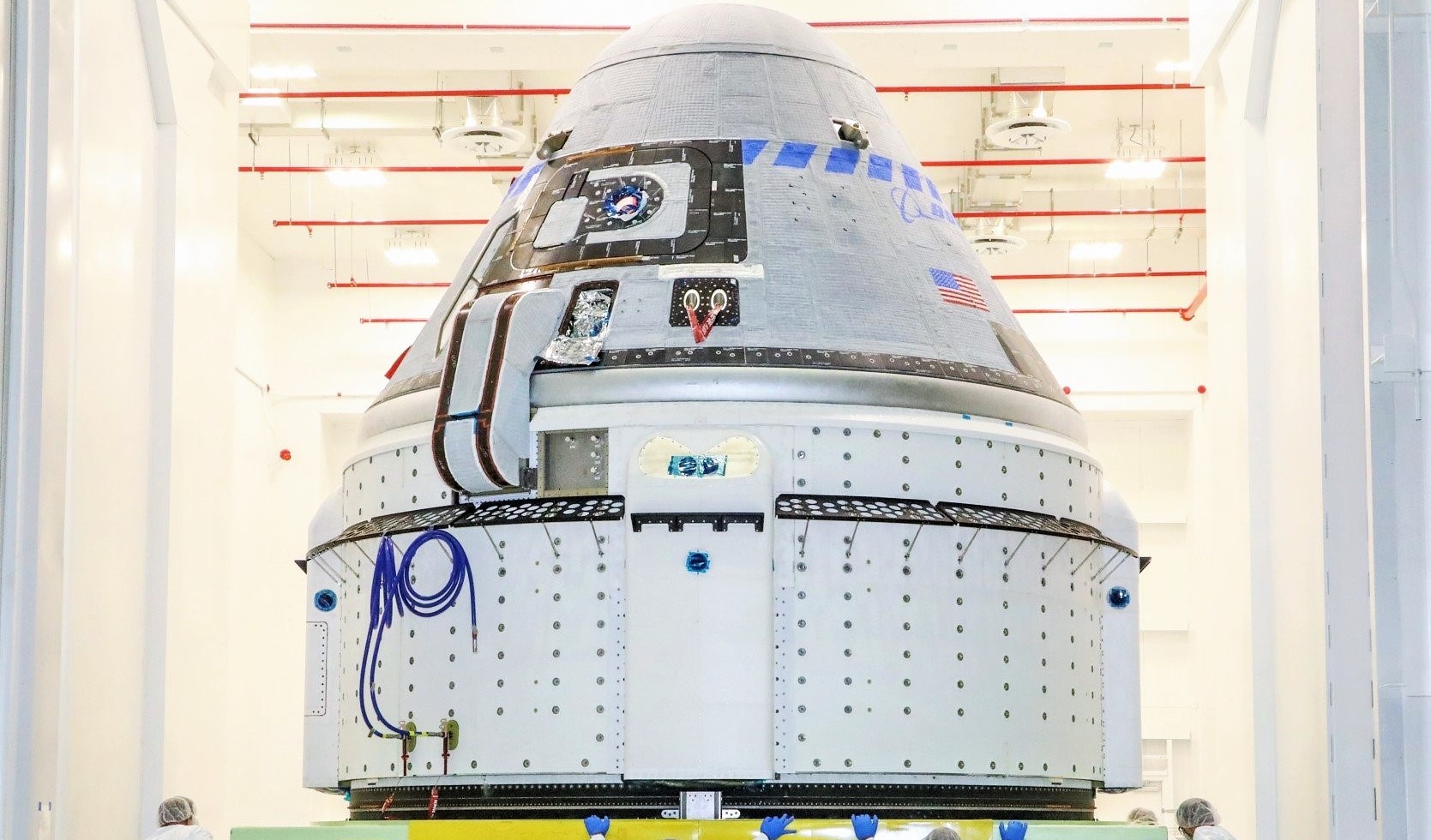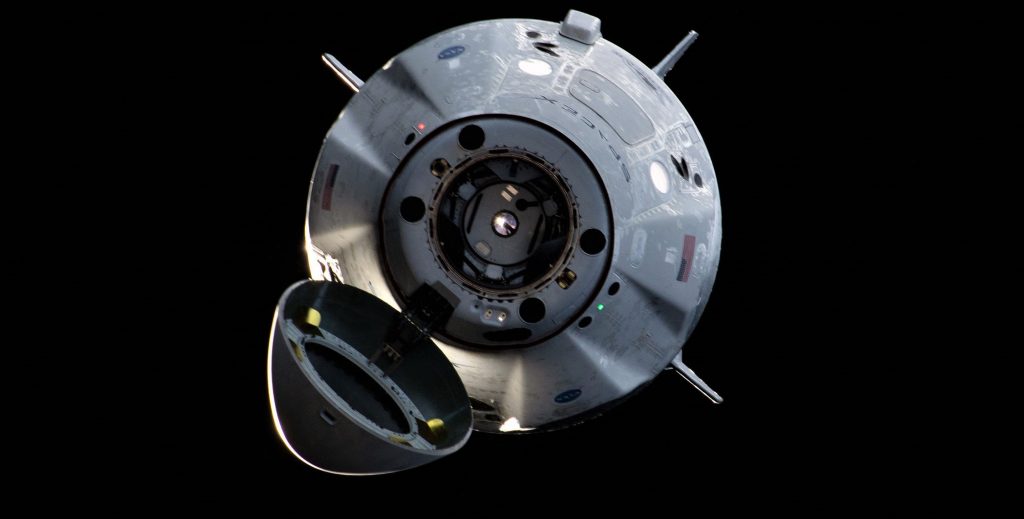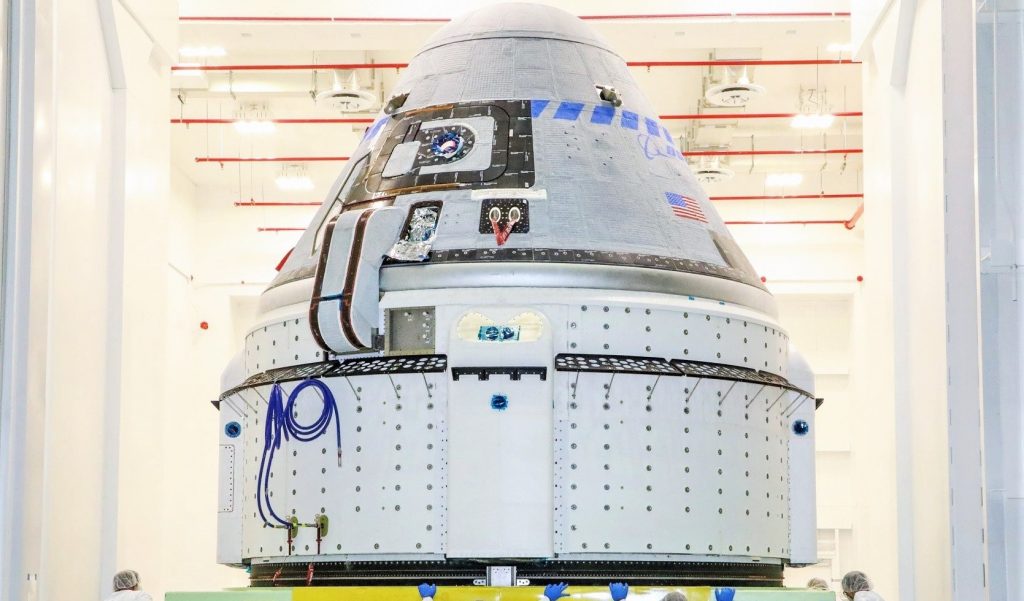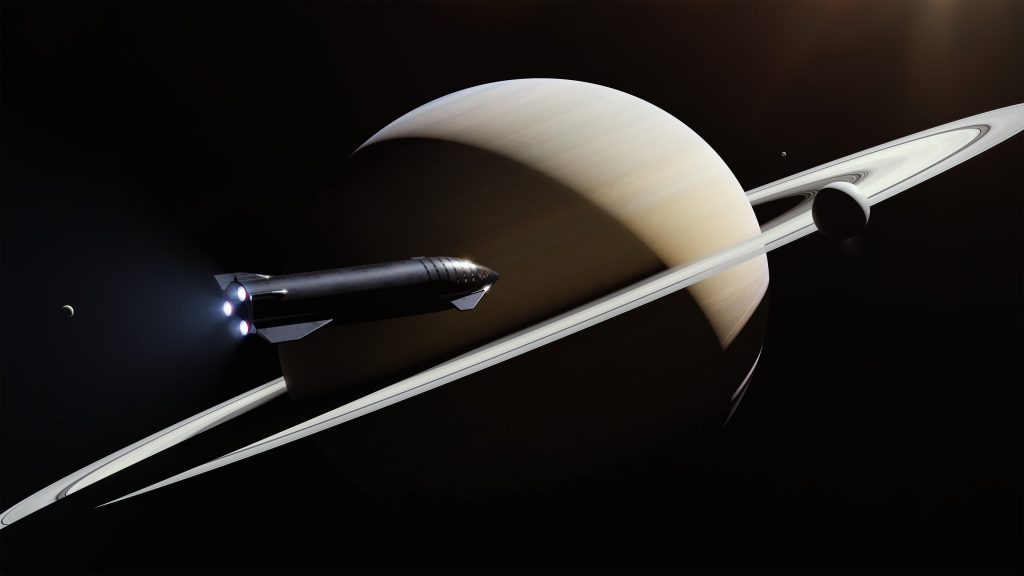

News
NASA snubbed SpaceX, common sense to overpay Boeing for astronaut launches, says audit
A detailed government audit has revealed that NASA went out of its way to overpay Boeing for its Commercial Crew Program (CCP) astronaut launch services, making a mockery of its fixed-price contract with the company and blatantly snubbing SpaceX throughout the process.
Over the last several years, the NASA inspector general has published a number of increasingly discouraging reports about Boeing’s behavior and track-record as a NASA contractor, and November 14th’s report is possibly the most concerning yet. On November 14th, NASA’s Office of the Inspector General (OIG) published a damning audit titled “NASA’s Management of Crew Transportation to the International Space Station [ISS]” (PDF).
Offering more than 50 pages of detailed analysis of behavior that was at best inept and at worst deeply corrupt, OIG’s analysis uncovered some uncomfortable revelations about NASA’s relationship with Boeing in a different realm than usual: NASA’s Commercial Crew Program (CCP). Begun in the 2010s in an effort to develop multiple redundant commercial alternatives to the Space Shuttle, prematurely canceled before a US alternative was even on the horizon, the CCP ultimately awarded SpaceX and Boeing major development contracts in September 2014.


NASA awarded fixed-cost contracts worth $4.2 billion and $2.6 billion to Boeing and SpaceX, respectively, to essentially accomplish the same goals: design, build, test, and fly new spacecraft capable of transporting NASA astronauts to and from the International Space Station (ISS). The intention behind fixed-price contracts was to hold contractors responsible for any delays they might incur over the development of human-rated spacecraft, a task NASA acknowledged as challenging but far from unprecedented.
Off the rails
The most likely trigger of the bizarre events that would unfold a few years down the road began in part on June 28th, 2015 and culminated on September 1st, 2016, the dates of the two catastrophic failures SpaceX’s Falcon 9 rocket has suffered since its 2010 debut. In the most generous possible interpretation of the OIG’s findings, NASA headquarters and CCP managers may have been shaken and not thinking on an even keel after SpaceX’s second major failure in a little over a year.
Under this stress, the agency may have ignored common sense and basic contracting due-diligence, leading “numerous officials” to sign off on a plan that would subvert Boeing’s fixed-price contract, paying the company an additional $287 million (~7%) to prevent a perceived gap in NASA astronaut access to the ISS. This likely arose because NASA briefly believed that SpaceX’s failures could cause multiple years of delays, making Boeing the only available crew transport provider for a significant period of time. Starliner was already delayed by more than a year, making it increasingly unlikely that Boeing alone would be able to ensure continuous NASA access to the ISS.
As NASA attempted to argue in its response to the audit, “the final price [increase] was agreed to by NASA and Boeing and was reviewed and approved by numerous NASA officials at the Kennedy Space Center and Headquarters”. In the heat of the moment, perhaps those officials forgot that Boeing had already purchased several Russian Soyuz seats to sell to NASA or tourists, and perhaps those officials missed the simple fact that those seats and some elementary schedule tweaks could have almost entirely alleviated the perceived “access gap” with minimal cost and effort.
The OIG audit further implied that the timing of a Boeing proposal – submitted just days after NASA agreed to pay the company extra to prevent that access gap – was suspect.
“Five days after NASA committed to pay $287.2 million in price increases for four commercial crew missions, Boeing submitted an official proposal to sell NASA up to five Soyuz seats for $373.5 million for missions during the same time period. In total, Boeing received $660.7 million above the fixed prices set in the CCtCap pricing tables to pay for an accelerated production timetable for four crew missions and five Soyuz seats.”
NASA OIG — November 14th, 2019 [PDF]
In other words, NASA officials somehow failed to realize or remember that Boeing owned multiple Soyuz seats during “prolonged negotiations” (p. 24) with Boeing and subsequently awarded Boeing an additional $287M to expedite Starliner production and preparations, thus averting an access gap. The very next week, Boeing asked NASA if it wanted to buy five Soyuz seats it had already acquired to send NASA astronauts to the ISS.
Bluntly speaking, this series of events has three obvious explanations, none of them particularly reassuring.
- Boeing intentionally withheld an obvious (partial) solution to a perceived gap in astronaut access to the ISS, exploiting NASA’s panic to extract a ~7% premium from its otherwise fixed-price Starliner development contract.
- Through gross negligence and a lack of basic contracting due-diligence, NASA ignored obvious (and cheaper) possible solutions at hand, taking Boeing’s word for granted and opening up the piggy bank.
- A farcical ‘crew access analysis’ study ignored multiple obvious and preferable solutions to give “numerous NASA officials” an excuse to violate fixed-price contracting principles and pay Boeing a substantial premium.
Extortion with a friendly smile
The latter explanation, while possibly the worst and most corruption-laden, is arguably the likeliest choice based on the history of NASA’s relationship with Boeing. In fact, a July 2019 report from the US Government Accountability Office (GAO) revealed that NASA was consistently paying Boeing hundreds of millions of dollars worth of “award fees” as part of the company’s SLS booster (core stage) production contract, which is no less than four years behind schedule and $1.8 billion over budget. From 2014 to 2018, NASA awarded Boeing a total of $271M in award fees, a practice meant to award a given contractor’s excellent performance.
In several of those years, NASA reviews reportedly described Boeing’s performance as “good”, “very good”, and “excellent”, all while Boeing repeatedly fumbled SLS core stage production, adding years of delays to the SLS rocket’s launch debut. This is to say that “numerous NASA officials” were also presumably more than happy to give Boeing hundreds of millions of dollars in awards even as the company was and is clearly a big reason why the SLS program continues to fail to deliver.
Ultimately, although NASA’s concern about SpaceX’s back-to-back Falcon 9 failures and some combination of ineptitude, ignorance, and corruption all clearly played a role, the fact remains that NASA – according to the inspector general – never approached SpaceX as part of their 2016/2017 efforts to prevent a ‘crew access gap’. Given that the CCP has two partners, that decision was highly improper regardless of the circumstances and is made even more inexplicable by the fact that NASA was apparently well aware that SpaceX’s Crew Dragon had significantly shorter lead times and far lower costs compared to Starliner.
This would have meant that had NASA approached SpaceX to attempt to mitigate the access gap, SpaceX could have almost certainly done it significantly cheaper and faster, or at minimum injected a bit of good-faith competition into the endeavor.
Finally and perhaps most disturbingly of all, NASA OIG investigators were told by “several NASA officials” that – in spite of several preferable alternatives – they ultimately chose to sign off Boeing’s demanded price increases because they were worried that Boeing would quit the Commercial Crew Program entirely without it. Boeing and NASA unsurprisingly denied this in their official responses to the OIG audit, but a US government inspector generally would never publish such a claim without substantial confidence and plenty of evidence to support it.
According to OIG sources, “senior CCP officials believed that due to financial considerations, Boeing could not continue as a commercial crew provider unless the contractor received the higher prices.” A lot remains unsaid, like why those officials believed that Boeing’s full withdrawal from CCP was a serious possibility and how they came to that conclusion, enough to make it impossible to conclude that Boeing legitimately threatened to quit in lieu of NASA payments.

All things considered, these fairly damning revelations should by no means take away from the excellent work Boeing engineers and technicians are trying to do to design, build, and launch Starliner. However, they do serve to draw a fine line between the mindsets and motivations of Boeing and SpaceX. One puts profit, shareholders, and itself above all else, while the other is trying hard to lower the cost of spaceflight and enable a sustainable human presence on the Moon, Mars, and beyond.
Check out Teslarati’s Marketplace! We offer Tesla accessories, including for the Tesla Cybertruck and Tesla Model 3.
News
Tesla UK sales see 14% year-over-year rebound in June: SMMT data
The SMMT stated that Tesla sales grew 14% year-over-year to 7,719 units in June 2025.

Tesla’s sales in the United Kingdom rose in June, climbing 14% year-over-year to 7,719 units, as per data from the Society of Motor Manufacturers and Traders (SMMT). The spike in the company’s sales coincided with the first deliveries of the updated Model Y last month.
Model Y deliveries support Tesla’s UK recovery
Tesla’s June performance marked one of its strongest months in the UK so far this year, with new Model Y deliveries contributing significantly to the company’s momentum.
While the SMMT listed Tesla with 7,719 deliveries in June, independent data from New AutoMotive suggested that the electric vehicle maker registered 7,891 units during the month instead. However, year-to-date figures for Tesla remain 2% down compared to 2024, as per a report from Reuters.
While Tesla made a strong showing in June, rivals are also growing. Chinese automaker BYD saw UK sales rise nearly fourfold to 2,498 units, while Ford posted the highest EV growth among major automakers, with a more than fourfold increase in the first half of 2025.
Overall, the UK’s battery electric vehicle (BEV) demand surged 39% to to 47,354 units last month, helping push total new car sales in the UK to 191,316 units, up 6.7% from the same period in 2024.
EV adoption accelerates, but concerns linger
June marked the best month for UK car sales since 2019, though the SMMT cautioned that growth in the electric vehicle sector remains heavily dependent on discounting and support programs. Still, one in four new vehicle buyers in June chose a battery electric vehicle.
SMMT Chief Executive Mike Hawes noted that despite strong BEV demand, sales levels are still below regulatory targets. “Further growth in sales, and the sector will rely on increased and improved charging facilities to boost mainstream electric vehicle adoption,” Hawes stated.
Also taking effect this week was a new US-UK trade deal, which lowers tariffs on UK car exports to the United States from 27.5% to 10%. The agreement could benefit UK-based EV producers aiming to expand across the country.
News
Tesla Model 3 ranks as the safest new car in Europe for 2025, per Euro NCAP tests
Despite being on the market longer than many of its rivals, the Tesla Model 3 continues to set the bar for vehicle safety.

The Tesla Model 3 has been named the safest new car on sale in 2025, according to the latest results from the Euro NCAP. Among 20 newly tested vehicles, the Model 3 emerged at the top of the list, scoring an impressive 359 out of 400 possible points across all major safety categories.
Tesla Model 3’s safety systems
Despite being on the market longer than many of its rivals, the Tesla Model 3 continues to set the bar for vehicle safety. Under Euro NCAP’s stricter 2025 testing protocols, the electric sedan earned 90% for adult occupant protection, 93% for child occupant protection, 89% for pedestrian protection, and 87% for its Safety Assist systems.
The updated Model 3 received particular praise for its advanced driver assistance features, including Tesla’s autonomous emergency braking (AEB) system, which performed well across various test scenarios. Its Intelligent Speed Assistance and child presence detection system were cited as noteworthy features as well, as per a WhatCar report.
Other notable safety features include the Model 3’s pedestrian-friendly pop-up hood and robust crash protection for both front and side collisions. Euro NCAP also highlighted the Model 3’s ability to detect vulnerable road users during complex maneuvers, such as turning across oncoming traffic.
Euro NCAP’s Autopilot caution
While the Model 3’s safety scores were impressive across the board, Euro NCAP did raise concerns about driver expectations of Tesla’s Autopilot system. The organization warned that some owners may overestimate the system’s capabilities, potentially leading to misuse or inattention behind the wheel. Even so, the Model 3 remained the highest-scoring vehicle tested under Euro NCAP’s updated criteria this year.
The Euro NCAP’s concerns are also quite interesting because Tesla’s Full Self-Driving (FSD) Supervised, which is arguably the company’s most robust safety suite, is not allowed for public rollout in Europe yet. FSD Supervised would allow the Model 3 to navigate inner city streets with only minimal human supervision.
Other top scorers included the Volkswagen ID.7, Polestar 3, and Geely EX5, but none matched the Model 3’s total score or consistency across categories. A total of 14 out of 20 newly tested cars earned five stars, while several models, including the Kia EV3, MG ZS, and Renault 5, fell short of the top rating.
Elon Musk
Why Tesla’s Q3 could be one of its biggest quarters in history
Tesla could stand to benefit from the removal of the $7,500 EV tax credit at the end of Q3.

Tesla has gotten off to a slow start in 2025, as the first half of the year has not been one to remember from a delivery perspective.
However, Q3 could end up being one of the best the company has had in history, with the United States potentially being a major contributor to what might reverse a slow start to the year.
Earlier today, the United States’ House of Representatives officially passed President Trump’s “Big Beautiful Bill,” after it made its way through the Senate earlier this week. The bill will head to President Trump, as he looks to sign it before his July 4 deadline.
The Bill will effectively bring closure to the $7,500 EV tax credit, which will end on September 30, 2025. This means, over the next three months in the United States, those who are looking to buy an EV will have their last chance to take advantage of the credit. EVs will then be, for most people, $7,500 more expensive, in essence.
The tax credit is available to any single filer who makes under $150,000 per year, $225,000 a year to a head of household, and $300,000 to couples filing jointly.
Ending the tax credit was expected with the Trump administration, as his policies have leaned significantly toward reliance on fossil fuels, ending what he calls an “EV mandate.” He has used this phrase several times in disagreements with Tesla CEO Elon Musk.
Nevertheless, those who have been on the fence about buying a Tesla, or any EV, for that matter, will have some decisions to make in the next three months. While all companies will stand to benefit from this time crunch, Tesla could be the true winner because of its sheer volume.
If things are done correctly, meaning if Tesla can also offer incentives like 0% APR, special pricing on leasing or financing, or other advantages (like free Red, White, and Blue for a short period of time in celebration of Independence Day), it could see some real volume in sales this quarter.
You can now buy a Tesla in Red, White, and Blue for free until July 14 https://t.co/iAwhaRFOH0
— TESLARATI (@Teslarati) July 3, 2025
Tesla is just a shade under 721,000 deliveries for the year, so it’s on pace for roughly 1.4 million for 2025. This would be a decrease from the 1.8 million cars it delivered in each of the last two years. Traditionally, the second half of the year has produced Tesla’s strongest quarters. Its top three quarters in terms of deliveries are Q4 2024 with 495,570 vehicles, Q4 2023 with 484,507 vehicles, and Q3 2024 with 462,890 vehicles.
-

 Elon Musk4 days ago
Elon Musk4 days agoTesla investors will be shocked by Jim Cramer’s latest assessment
-

 News1 week ago
News1 week agoTesla Robotaxi’s biggest challenge seems to be this one thing
-

 Elon Musk2 weeks ago
Elon Musk2 weeks agoFirst Look at Tesla’s Robotaxi App: features, design, and more
-

 News2 weeks ago
News2 weeks agoSpaceX and Elon Musk share insights on Starship Ship 36’s RUD
-

 News2 weeks ago
News2 weeks agoWatch Tesla’s first driverless public Robotaxi rides in Texas
-

 News1 week ago
News1 week agoWatch the first true Tesla Robotaxi intervention by safety monitor
-

 News2 weeks ago
News2 weeks agoTesla has started rolling out initial round of Robotaxi invites
-

 Elon Musk2 weeks ago
Elon Musk2 weeks agoTesla to launch in India in July with vehicles already arriving: report


















